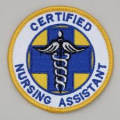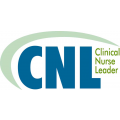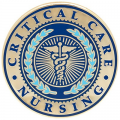Over 1.4 million certified nursing assistants (CNAs) are employed across the country. Nearly 70 percent of these professionals work in nursing care facilities and hospitals. The rest work at continuing care retirement communities, assisted living facilities for the elderly, home healthcare services, employment services, and specialty hospitals. The largest CNA populations are found in New York, California, Florida, Texas, and Pennsylvania.
Nursing roles and specializations
Nursing professions run the gamut, from one-on-one bedside care to complex organizational management. Below we've descibed the key aspects of both junior (CNA, LPN / LVN) and senior (RN, APRN) nursing roles. We've also profiled a range of popular specializations for nurses with advanced qualifications.
Registered nursing specializations
Advanced practice nursing roles
Approximately six percent of the registered nurse (RN) population works in home healthcare services. They travel to patients’ homes, schools, community centers, or nursing homes to provide secondary or tertiary care. Home health nurses offer hands-on treatment, and they educate patients and family members about proper care and prevention. They work with a broad range of patients including the elderly, the terminally ill, the physically disabled, patients in accident rehabilitation, mothers recovering from childbirth, and sick infants.
The U.S. Census Bureau expects seniors (those aged 65 and over) to reach a population of 84 million by 2050. This will nearly double the current U.S. senior population of 45 million. The aging of the Baby Boom generation will power much of this demographic shift. Since seniors account for roughly half of all hospital admissions, the demand for qualified geriatric nurses will increase significantly.
More than 1.5 million registered nurses (RNs) work in state, local, and private hospitals across the United States. Thousands of these nurses work in emergency care. Known as emergency nurses, these skilled professionals provide lifesaving care in emergency rooms, urgent care centers, helicopters, ambulances, and many other environments. They must act quickly to stabilize severely injured and sick patients, diagnose medical conditions, and alleviate pain.
With 2.7 million practitioners in the United States, registered nurses (RNs) comprise the largest healthcare occupation. Of these nurses, more than 1 million hold certification in a specialty area. One of the most common areas is critical care. According to the Department of Health and Human Services (HHS), more than 318,000 RNs are critical care nurses.
Clinical nurse leader (CNL) is an emerging nursing role developed by the American Association of Colleges of Nursing (AACN) in collaboration with leaders from the practice environment. The role was created to improve patient outcomes in response to changes in healthcare delivery and health professional education. The CNL oversees the lateral integration of care for patients, and she may actively provide direct patient care in complex situations. (To avoid confusion: the clinical nurse leader fills a different role than a clinical nurse specialist, or CNS.
More than 2.7 million registered nurses (RNs) are employed in the United States. Collectively, they comprise the largest group of healthcare professionals in the world. While RNs may find employment in a variety of settings, more than 1.5 million work in state, local, and private hospitals. The remainder work in nursing and residential care facilities, physicians’ offices, home healthcare services, government, and education. In all settings, RNs provide essential patient care and treatment.
Almost 750,000 licensed vocational nurses (LVNs) and licensed practical nurses (LPNs) work in the United States. The duties and educational requirements are the exact same for both roles; “LVN” is simply the preferred title in the states of Texas and California. Texas employs 72,000 LVNs, while more than 60,000 LVNs practice in California. These are the two largest populations of LVNs / LPNs in the entire country.
The U.S. is home to nearly 740,000 licensed practical nurses (LPNs) and licensed vocational nurses (LVNs). The two terms are actually synonymous: 133,000 nurses in Texas and California use the title “LVN,” while the remaining ~600,000 nurses use the title “LPN.” Regardless of the preferred title, all LPNs work under the direction of doctors and registered nurses (RNs) to provide basic medical care and ensure that patients are comfortable.
Over 1.4 million certified nursing assistants (CNAs) are employed across the country. Nearly 70 percent of these professionals work in nursing care facilities and hospitals. The rest work at continuing care retirement communities, assisted living facilities for the elderly, home healthcare services, employment services, and specialty hospitals. The largest CNA populations are found in New York, California, Florida, Texas, and Pennsylvania.
- « first
- ‹ previous
- 1
- 2
- 3










